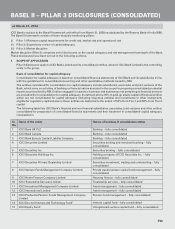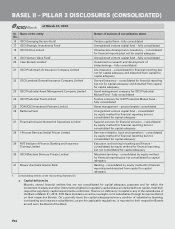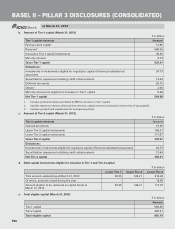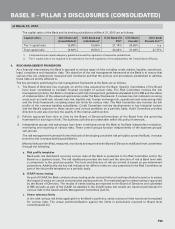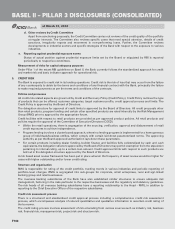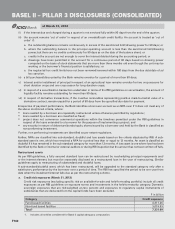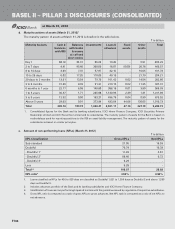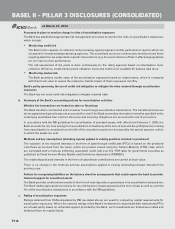ICICI Bank 2012 Annual Report Download - page 178
Download and view the complete annual report
Please find page 178 of the 2012 ICICI Bank annual report below. You can navigate through the pages in the report by either clicking on the pages listed below, or by using the keyword search tool below to find specific information within the annual report.
F100
d. Other reviews by Credit Committee
Apart from sanctioning proposals, the Credit Committee carries out reviews of the credit quality of the portfolio
at regular intervals. The Committee also reviews specific cases that need special attention, details of credit
sanctions, irregularity reports and movement in non-performing loans. Further, the Committee reviews
developments in industrial sectors and specific strategies of the Bank with respect to the exposure to various
industries.
e. Reporting against prudential exposure norms
Status of actual position against prudential exposure limits set by the Board or stipulated by RBI is reported
periodically to respective committees.
Measurement of risks for capital adequacy purposes
Under Pillar 1 of the extant RBI guidelines on Basel II, the Bank currently follows the standardised approach for credit
and market risk and basic indicator approach for operational risk.
5. CREDIT RISK
The Bank is exposed to credit risk in its lending operations. Credit risk is the risk of loss that may occur from the failure
of any counterparty to abide by the terms and conditions of any financial contract with the Bank, principally the failure
to make required payments as per the terms and conditions of the contracts.
Policies and processes
All credit risk related aspects are governed by Credit and Recovery Policy (Credit Policy). Credit Policy outlines the type
of products that can be offered, customer categories, target customer profile, credit approval process and limits. The
Credit Policy is approved by the Board of Directors.
The delegation structure for approval of credit limits is approved by the Board of Directors. All credit proposals other
than retail products, program lending and certain other specified products are rated internally by the Risk Management
Group (RMG) prior to approval by the appropriate forum.
Credit facilities with respect to retail products are provided as per approved product policies. All retail products and
policies require the approval of the Committee of Executive Directors (COED).
Within the retail operations, there is segregation of the sourcing, verification, approval and disbursement of retail
credit exposures to achieve independence.
Program lending involves a cluster based approach, wherein a lending program is implemented for a homogeneous
group of individuals/business entities, which comply with certain laid down parameterised norms. The approving
authority as per the Board approved authorisation lays down these parameters.
For certain products including dealer funding, builder finance and facilities fully collateralised by cash and cash
equivalents, the delegation structure approved by the Board of Directors may permit exemption from the stipulation
pertaining to internal rating, up to a certain loan amount. Credit approval limits with respect to such products are
laid out in the delegation structure approved by the Board of Directors.
A risk based asset review framework has been put in place wherein the frequency of asset review would be higher for
cases with higher outstanding and/or lower credit rating.
Structure and organisation
RMG is responsible for rating of the credit portfolio, tracking trends in various industries and periodic reporting of
portfolio-level changes. RMG is segregated into sub-groups for corporate, small enterprises, rural and agri-linked
banking group and retail businesses.
The overseas banking subsidiaries of the Bank have also established similar structures to ensure adequate risk
management, factoring in the risks particular to the respective businesses and the regulatory and statutory guidelines.
The risk heads of all overseas banking subsidiaries have a reporting relationship to the Head - RMG, in addition to
reporting to the Chief Executive Officer of the respective subsidiaries.
Credit risk assessment process
There is a structured and standardised credit approval process including a comprehensive credit risk assessment
process, which encompasses analysis of relevant quantitative and qualitative information to ascertain credit rating of
the borrower.
The credit rating process involves assessment of risk emanating from various sources such as industry risk, business
risk, financial risk, management risk, project risk and structure risk.
BASEL II – PILLAR 3 DISCLOSURES (CONSOLIDATED)
at March 31, 2012





